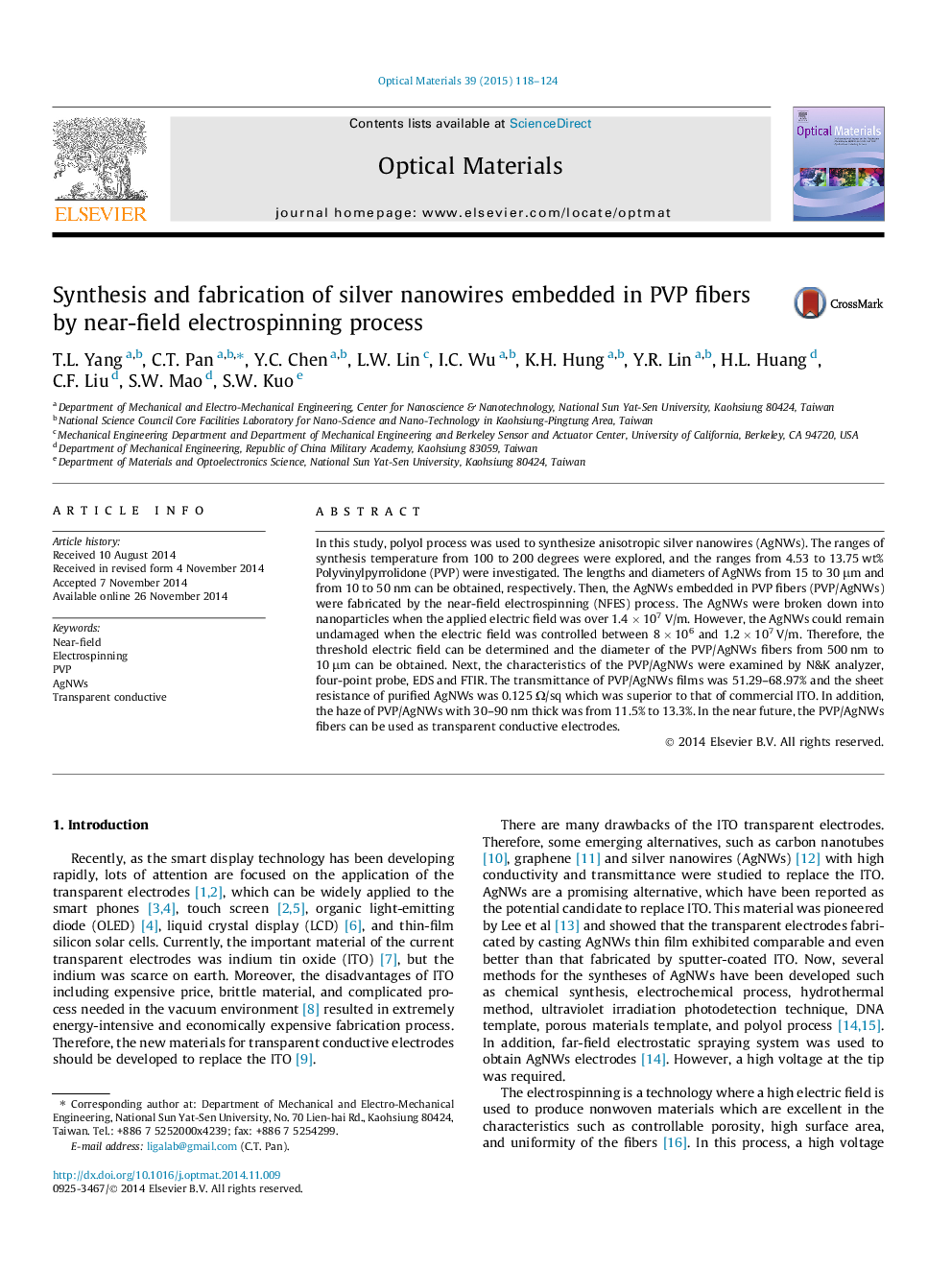| Article ID | Journal | Published Year | Pages | File Type |
|---|---|---|---|---|
| 1494234 | Optical Materials | 2015 | 7 Pages |
•The PVA/AgNWs composite fibers were successfully fabricataed via the NFES technique.•The applied voltage was over 14 kV, AgNWs can be broken. In addition, the amount of AgNPs increased in the fibers with the applied voltage.•The transmittance of PVP/AgNWs film spin-coated on the glass collector at 800 rpm spinning speed was better than that at 200 rpm.•The sheet resistance of PVP/AgNWs without PVP measured 0.125 Ω/sq by four-point probe.
In this study, polyol process was used to synthesize anisotropic silver nanowires (AgNWs). The ranges of synthesis temperature from 100 to 200 degrees were explored, and the ranges from 4.53 to 13.75 wt% Polyvinylpyrrolidone (PVP) were investigated. The lengths and diameters of AgNWs from 15 to 30 μm and from 10 to 50 nm can be obtained, respectively. Then, the AgNWs embedded in PVP fibers (PVP/AgNWs) were fabricated by the near-field electrospinning (NFES) process. The AgNWs were broken down into nanoparticles when the applied electric field was over 1.4 × 107 V/m. However, the AgNWs could remain undamaged when the electric field was controlled between 8 × 106 and 1.2 × 107 V/m. Therefore, the threshold electric field can be determined and the diameter of the PVP/AgNWs fibers from 500 nm to 10 μm can be obtained. Next, the characteristics of the PVP/AgNWs were examined by N&K analyzer, four-point probe, EDS and FTIR. The transmittance of PVP/AgNWs films was 51.29–68.97% and the sheet resistance of purified AgNWs was 0.125 Ω/sq which was superior to that of commercial ITO. In addition, the haze of PVP/AgNWs with 30–90 nm thick was from 11.5% to 13.3%. In the near future, the PVP/AgNWs fibers can be used as transparent conductive electrodes.
